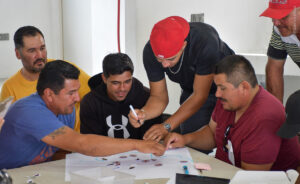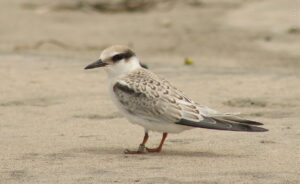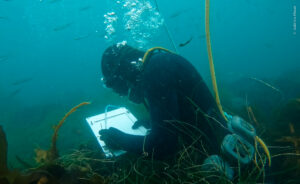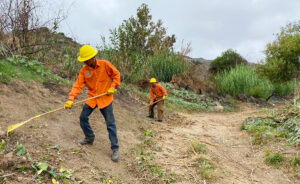Cerro Cuchuma stands at 859 meters above sea level. Since 70% of its land is in Mexican territory and 30% in U.S. soil, located in the border city of Tecate, it is clearly a binational site. This makes it an essential site for the ecological services it provides to both nations. Among the risk factors for Cerro Cuchuma and the Tijuana-San Diego region are rapid urban-industrial development, land-use changes, and droughts.
In 2003, Pronatura Noroeste, in collaboration with La Puerta Foundation, established the Cerro Cuchuma Conservation Easement. Thanks to this effort, 819 hectares were set aside for conservation purposes. Among the objectives of this easement is to function as a private conservation reserve to keep the natural balance of the chaparral and other plant species, like the White Sage (Salvia apiana). The easement also promotes a healthy environment for biodiversity and improves the quality of life for local residents, among other benefits.
Cerro Cuchuma’s biodiversity can be appreciated in common tree species, such as the Baja California Cedar (Cupressus forbesii), the Green Oak (Quercus agrifolia) and the Palo Verde (Parkinsonia genus). Its rocky geography, abundant in desert scrub and chaparral, offers refuge to creeping birds such as the Northern Roadrunner (Geococcyx californianus), and small mammals like the Desert Skunk (Campylorhynchus brunneicapillus). Other species identified around the Cerro Cuchuma are the Coyote (Canis latrans), the Quail (Callipepla californica), the Spotted Rattlesnake (Crotalus pyrrhus) and the Horned Lizard (Phrynosoma blainvillii).
It is worth mentioning that Cerro Cuchuma is considered a sacred place by the Kumiai culture, one of the Yuman groups that have inhabited the Baja California peninsula for 10,000 years. Kumiai people carry out ceremonies around the supernatural power they attribute to this geological formation. Among the best known traditions is an annual horseback ride from Valle las Palmas to Cerro Cuchuma. For all these reasons, the Cuchuma is part of the Intangible Cultural Heritage of Mexico.
Collaborate with us for the restoration of the ecosystem in Cerro Cuchuma.
















